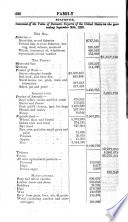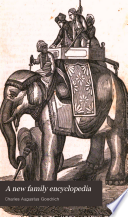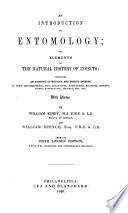 | James Rennie - 1830 - 440 pages
...problem : — A quantity of wax being given, to form of it similar and equal cells of a determinate capacity, but of the largest size in proportion to...employed, and disposed in such a manner as to occupy the least possible space in the hive. This problem is solved by bees in all its conditions. The cylindrical... | |
 | 1831 - 796 pages
...geometricians, namely : .4 quantity of ivax being given, to form of it similar and equal cells of a determinate capacity, but of the largest size in proportion to...least possible space. Every part of this problem is practically solved by bees. If their cells had been cylindrical, which form seems best adapted to the... | |
 | Charles Augustus Goodrich - 1831 - 484 pages
...problem : — A quantity of wax being given to form of it similar and equal cells of a determinate capacity, but of the largest size in proportion to...employed, and disposed in such a manner as to occupy the least possible space in the hive. This problem is solved by bees in all its conditions. The cylindrical... | |
 | William Smellie - 1832 - 348 pages
...combs, bees seem to resolve a problem which would not be a little puzzling to some geometers, namely, a quantity of wax being given, to make of it equal and...in proportion to the quantity of matter employed, (wd disposed in such a manner as to occupy in the hive the least possible space. Every part of this... | |
 | 1831 - 420 pages
...it similar and equal cells of a determinate capacity, but of the largest size in proportion to tfie quantity of matter employed, and disposed in such...least possible space. Every part of this problem is practically solved by bees. If their cells had been cylindrical, which form seems best adapted to the... | |
 | Charles Augustus Goodrich - 1833 - 478 pages
...problem : — A quantity of wax being given to form of it similar and equal cells of n determinate capacity, but of the largest size in proportion to...quantity of matter employed, and disposed in such n manner as to occupy the least possible space in the hive. This problem is solved by bees in all its... | |
 | William Smellie - 1835 - 380 pages
...combs, bees seem to resolve a problem which would not be a little puzzling to some geometers, namely, a quantity of wax being given, to make of it equal and...by the bees.' By applying hexagonal cells to each other's sides, no void spaces are left between them ; and, though the same end might be accomplished... | |
 | Charles Augustus Goodrich - 1835 - 474 pages
...problem : — A quantity of wax being given to form of it similar and equal cells of n determinate capacity, but of the largest size in proportion to...employed, and disposed in such a manner as to occupy the least possible space in the hive. This problem is solved by bees in all its conditions. The cylindrical... | |
 | William Kirby, William Spence - 1846 - 642 pages
...geometers, namely, a quantity of wax being given, to form of it similar and equal cells of a determinate capacity, but of the largest size in proportion to...least possible space. Every part of this problem is practically solved by bees. If their cells had been cylindrical, which form seems best adapted to the... | |
 | 1847 - 180 pages
...geometry, namely, "a quantity of wax being given, to form of it similar and equal cells of a determinate capacity, but of the largest size in proportion to...least possible space." Every part of this problem is practically solved by bees. If their cells had been cylindrical, which form seems best adapted to the... | |
| |